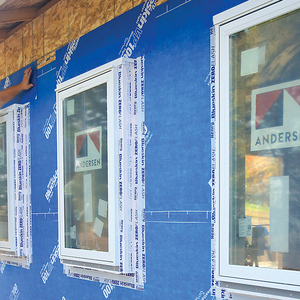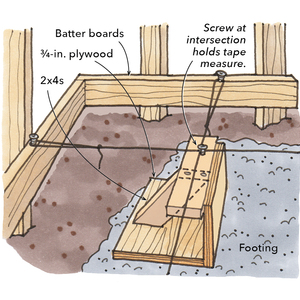So I got my FHB magazine and saw the Q&A there where i got the impression that they do not advise grounding to a metal water pipe.
Yet when I bought the house and had an electrician upgrade from the fuse box to a breaker box, he stated that code required two grounds: 1 from the breaker box to the ground, and the other to the water main via the copper pipe.
This would’ve been in 1999, so not sure if they changed the code after that or if it was our local code that required that.
Does that mean I no longer have to ground to the water main anymore? The house has a mix of romex and bx(I think that’s what it’s called with the metal sheathing acting as the ground).



















Replies
Bonding to the incoming water line within the first five feet. This is not the same as grounding. More than likely the wire to your water pipe is #4 stranded and your ground wire is #6 solid.
How it's done here... two ground rods, with heavy (#4?) stranded copper running to one and then the other... and a separate heavy stranded copper clamped to hot, cold, and gas piping.
The idea is that if any of the plumbing somehow becomes energized, it has a ground and will not give you quite as much of a jolt if you touch it, since you usually have less ground potential.
There is a section in the code book that says if there is any wire in a plumbing wall and there is a possibility the piping could be energized, the pipe must be bonded to the house grounding system.
If I get back down to the shop tonight, I'll look it up,
You be right, me thinks.
Dave
the idea is that if any plumbing becomes enegized it WILL cause the breaker to TRIP
There are 3 different things here.
1. Groundling Electrode System. You are required to have a grounding electrode system. There are many different "systems". Most commonly for residential use a ground rod. If you use a ground rod then you either need to have it tested and show less than a 25 ohms or to use a secondary grounding electrode (which can be a 2nd ground rod).
Another grounding electrode is an underground metalic water pipe (IIRC at least 10ft length). However regardlss of the resistance that is not allowed to the only ground electrode. It needs a secondard electrode. The connections made to that water pipe has to be made within the first 5 ft of entering the building.
Thus common resisdential grounding electrode systems consists of a ground rod and a metalic water pipe.
2. Bonding. Any metalic equipment that might be accidential energized needs to be bonded to the grounding electrode system, in general. There are specific bonding requirements for some systems such as metalic water and gas piping.
Thus if you had water servaice from PE or PVC piping, but copper inside then the copper pipe would be bonded to the grounding electrode system. But it would not be a grounding electrode. In that case 2 ground rods would commonly be used for residential. Or for new construcstion a UFER (uses the concrete footers) will be the ground electrodes.
3. Equipment grounding conductor. That was is commonly called "THE GROUND" and is the 3 connection on 120v receptacles.
For older homes that did have have "grounds" one common practice in the past was to run a ground wire to the nearest cold water pipe.
This is was the article was talking about.
For example if someone installed a garabage disposal they will extend a circuit from the nearest receptacle and run a ground wire to the pipe under the sink.
That practice is no longer allowed. A separate equipment grounding conductor can still be run. But it has to either go back to the ground bus in the main panel (where it is connected to the grounding electrode system) or go to another box which has an equipment grounding conductor that goes back to the ground bus bar.
Other options are to run a new circuit with a egc or to replace the receptacle protected by GFCI.
Edited 3/26/2005 5:36 pm ET by Bill Hartmann